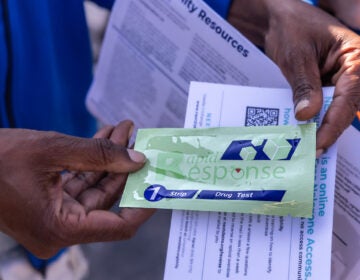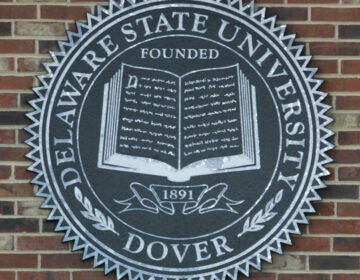Will Philly follow Wilmington’s lead with smoke-free housing?
Listen
Kennedy resident Charrea Jenifer says the smoke-free rule is good for her children.
Any family can forbid cigarettes, but smoking foes say those precautions aren’t enough for apartment dwellers. In closely linked housing, fumes travel.
That’s why public housing authorities, including Wilmington, Del., are moving to ban lighting up completely in certain buildings.
“That actually gets into the ventilation system, and seeps through the cracks in the walls, and others are getting second hand smoke,” said Jane Vincent, the mid-Atlantic region administrator for the U.S. Department of Housing and Urban Development.
Years ago, HUD encouraged local housing authorities to ban smoking in some or all of their buildings.
“You guys are allowed to make your decisions about smoke free housing,” Vincent said.
Back in 2011, the Philadelphia Department of Health sponsored a series of community meetings to gauge community sentiment on a range of tobacco control policies including the idea to ban smoking in public housing. Asked about its plans-or progress in that direction, the Philadelphia Housing Authority did not respond in time for deadline.
These days some privately owned, higher-priced properties offer smoke-free apartments. Now, that amenity is available to some public housing residents, too.
Vincent said low-income families shouldn’t have to choose between an affordable home and a healthy home.
Fred Purnell is executive director of the Wilmington Housing Authority, which now forbids smoking at two complexes — Kennedy Apartments and the Lincoln Towers.
Health and safety were on his mind when Purnell decided to push for the change.
Back in 2006, a resident left smoldering butts in the trash at the authority’s Crestview Apartments. A spark ignited a fire that spread into the walls and ultimately became one of the largest fires in a high-rise building in Wilmington’s history.
“People had to be evacuated by ladder from upper floors,” Purnell said. “It was more than three years and $7 million before that building could be reoccupied.”
This month HUD officials met with members of the Pennsylvania-Delaware Affordable Housing Management Association to talk about some of the some of the headaches — and benefits — of going smoke-free.
Saving money is a priority for many property owners. According to one estimate it costs about $3,000 less to flip an apartment after a non-smoker moves out compared to the painting and cleanup required when a heavy smoker leaves.
So far, Purnell says the Wilmington Housing Authority has made the smoke-free switch the easy way. When a building is emptied out and renovated, all the new tenants sign a new lease and agree to the new rules.
Kenneth Daniels lives at the Crestview Apartments, where smoking is allowed. He says a smoke-free ban is fine for newly occupied buildings, but he’d fight a policy change for his apartment.
“We should have the freedom to do what we want to do in our unit. I would go to court,” Daniels said.
Fred Purnell hears that argument a lot but says smokers are not a protected class of people. His plan is expand the smoke-free policy at the Wilmington Housing Authority. “So the jury’s still out, we’ll see how it goes,” he said.
The fear of lawsuits — from smokers — complicates the decision to go smoke-free. But one HUD official said property owners should also consider another potential legal complication: lawsuits from non-smokers who say their health is harmed by a neighbor’s wafting habit.
Complications ahead
When it’s done right, instituting a smoking ban takes lots communication and meetings with residents. Some property owners even offer quit-smoking referrals to classes or other resources to help smokers kick the habit.
HUD officials advise property owners to avoid discrimination. They say: Don’t even ask applicants if they smoke. It’s OK to ban the behavior, but not the people
Some members of the Pennsylvania-Delaware Affordable Housing Management Association say they are hesitating because there are so many legal worries to think through.
For example, several states, including New Jersey, have made medical marijuana legal. That means public housing managers may have to figure if they will accommodate those legal smokers and look for ways to make sure medical marijuana users don’t become a nuisance to other residents.
The “Designs on Health” series was conceived as a project for the Dennis A. Hunt Fund for Health Journalism, which is administered by The California Endowment Health Journalism Fellowships, a program of USC’s Annenberg School for Communication & Journalism.
WHYY is your source for fact-based, in-depth journalism and information. As a nonprofit organization, we rely on financial support from readers like you. Please give today.




